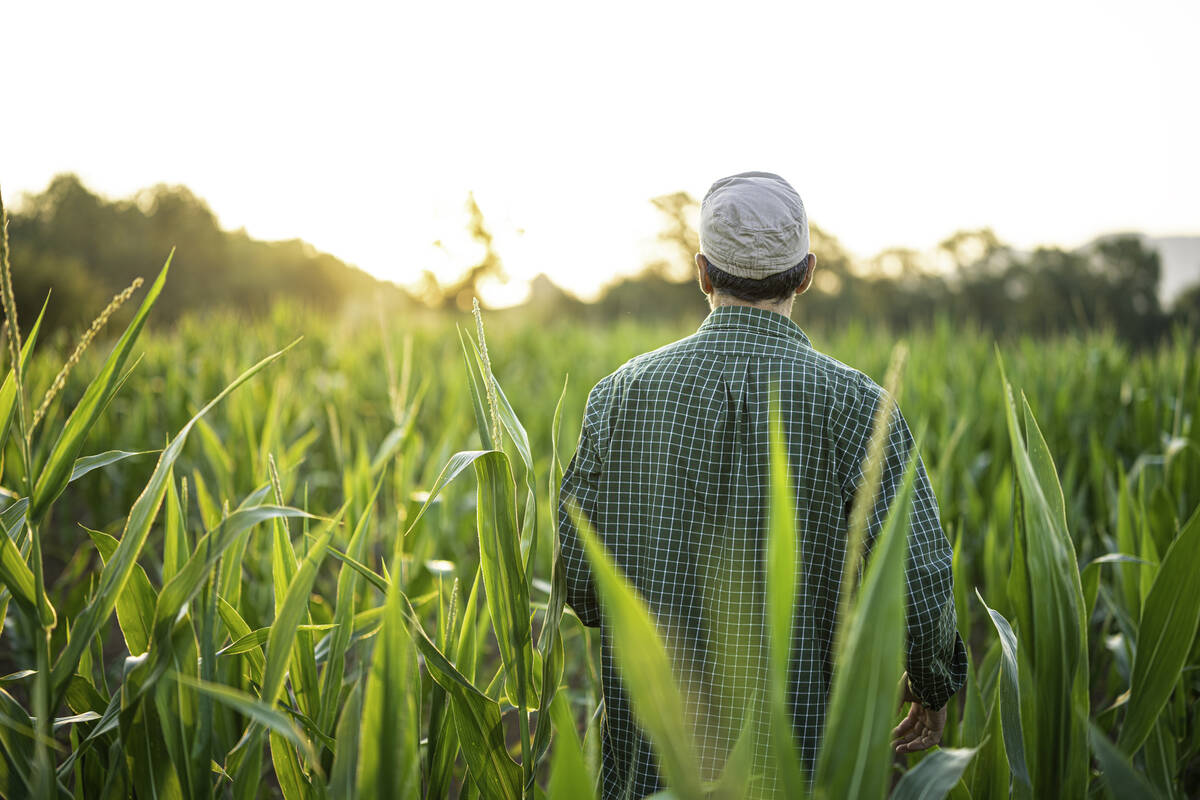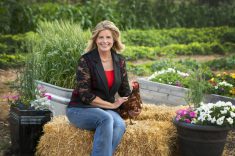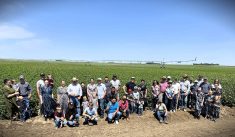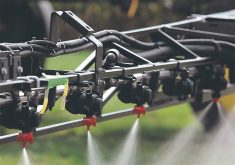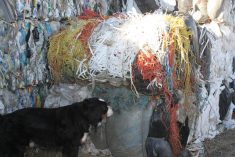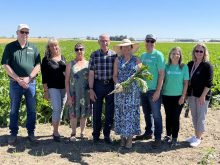As the pressures of climate change, soil degradation, and biodiversity loss mount, Canadian farmers and policy leaders are increasingly turning their attention to regenerative agriculture.
“Recently, there’s been huge interest from governments, from foundations, industry organizations, food buyers … as well as from some farmers in either considering regenerative approaches or diving right in and doing regenerative practices on farm,” said Laura Telford, an organic specialist with Manitoba Agriculture, who moderated an online forum on regenerative agriculture on April 2.
The push towards regenerative agriculture is being driven by serious modern problems that include climate change, declining soil health, loss of topsoil, loss of biodiversity, and a recognition that society has dependent on fossil fuel inputs, Telford said. However, one of the things holding regenerative agriculture back seems to be a lack of shared language and benchmarks.
Read Also
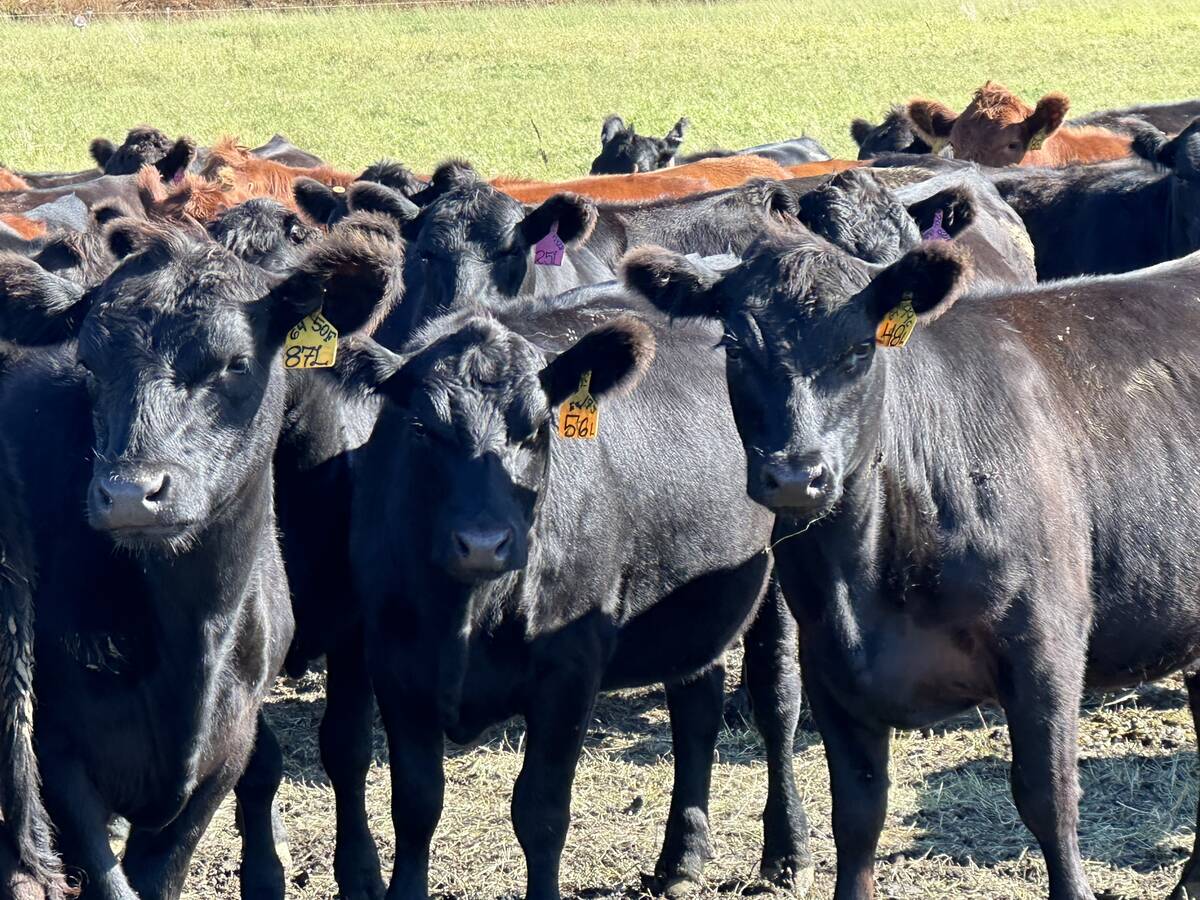
Want to track the cattle industry? Follow the heifers
Beef specialists examine key indicators in Canadian market for growth patterns in cattle markets
“There have been literally endless debates about what regenerative agriculture is and what it isn’t,” Telford said. “The number one challenge to widespread adoption is really lack of universal definitions and standards for regenerative agriculture.”
In Manitoba, many farmers see that open-endedness as a ‘feature, not a bug’ and claim that prescriptive standards in regenerative agriculture don’t work, because every farm is unique, and methods must suit the farm’s operation. However, lack of standards have been hindering adoption, Telford said.
“People want to know what it is that they’re adopting before they adopt it, and whether it’s going to make any money and whether it’s going to make any sense on their farm.”
Allison Squires and Cody Straza, a farming couple from Wood Mountain, Sask., own and operate an 8,000-acre farm using regenerative practices such as reduced tillage, cover cropping, composting, pollinator strips, intercropping and livestock integration. Their farm has been certified organic since 2010 and achieved Regenerative Organic Certification (ROC) in 2021.
“When we started farming, we were your typical organic system, which is still really great, but we soon saw with the drought that happened in 2017 … that we needed to make a bit more of a change,” Squires, one of the panelists at the forum, said.
The couple began experimenting with custom grazing cattle in 2018 and quickly saw both ecological and economic benefits.
“It really cut down on our expenses for equipment and labour, oil and fuel, putting all of that carbon drop into the soil. And we were getting dividends, having that soil cover and cycling those nutrients through the cattle, through the movement right back onto the soil,” Straza said.
In 2019, they bought their own herd and expanded their pasture base, but it hasn’t been easy, especially when it comes to time and labour.
“Scaling it across broad acres creates more of a management challenge and management time commitment as well, which is something that cannot be ignored,” Squires said.
One obstacle the couple continues to face is the structure of government funding. While programs like the Sustainable Canadian Agricultural Partnership (SCAP) and the On-Farm Climate Action Fund (OFCAF) aim to support producers transitioning to sustainable practices, they don’t always reward early adopters.
“And it’s incentivizing a change in practices … but if it doesn’t change mindsets, it’s not going to change those practices in the long term,” Straza said.
Shawn Catherwood, a fifth-generation farmer and CEO of Spur Line Crop Solutions Ltd., another panelist at the forum, agreed. Catherwood also serves as lead agronomist for a new soil health extension program for crop advisors in Manitoba and Saskatchewan, and he helped PepsiCo develop its regenerative agriculture program in the Prairies.
The OFCAF program has been taken up by many farmers who are using the fund for large-scale practices that Catherwood doesn’t necessarily view as regenerative, he said. However, SCAP offers more practical help.
“There’s actual hands-on support and aid for making some of these transitions,” he said. “You know, 50 to 85 to 90 per cent rebates on some of these different expenses really starts to add up and help with that transition, [to] get over that hump.”
Catherwood’s own transition to regenerative agriculture has been cautious and layered.
“On our farm, I would describe us as still in that transition phase into regenerative ag,” he said. “We’re about three years into doing it, pretty full on. So, we definitely didn’t quit cold turkey the old conventional style, that’s for sure. “
He said they’ve been “picking away at it” as they can, but that lets them manage the dynamics and complexities that can creep in when making large shifts on a family farm with a lot of family members that are involved in the operation.
“Maybe they don’t always see things the way I see it, so it’s kind of working through some of that stuff,” he said.
For Jason Freeman, another forum panelist who founded Bio Hemp Environmental Technologies and later the Farmer Direct Co-op, the future of regenerative agriculture hinges not only on values, but market readiness.
“There needs to be a market for this and the market is developing, but for farmers, it should be profitable. That’s the whole thing about this. You’re reducing your input costs, especially if you’re a conventional farm, and you want to transition to this type of farming, and you’re getting more for your crop,” he said.
Freeman sees regenerative agriculture as a gateway to healthier food and healthier people.
“The market in the small way is really starting to focus on nutrient dense foods, basically foods grown through regenerative agriculture. It’s the only way you’re going to get nutrient dense food. You can’t GMO it up. You can’t add more chemicals. You have to focus on the soil and have really strong, diverse soil,” he said.
While some panelists viewed the lack of regulation as a bottleneck, others saw it as an inevitable next step, and one that must be approached carefully. Freeman believes standards are necessary for accreditation bodies.
“You need to spell it out to consumers. There needs to be a standard … so they can have some trust. I think regenerative certification is doing that.”
Catherwood agreed, noting these regulations are probably coming more quickly than most people who are not involved in the agriculture industry realize.
“Farmers are aware of what’s coming, I think, and that’s a good thing. Now we can start getting prepared,” he said.
Squires, who is also president of Canadian Organic Growers, said that while it’s essential to create standards, those standards must be inclusive and democratic.
“One of the strengths of the organic standards is the fact that it’s publicly owned, right? It’s reviewed every five years, [and] anyone can submit conditions to the standards to make changes,” she said.
While Squires’ and Straza’s farm meets the rigourous ROC standards, other models such as Regenified or Integrity Grown are gaining traction with conventional farmers.
“Anytime that there are conventional neighbours [that] are reducing their pesticide use, reducing their disturbances, creating more diversity on their land, that’s a win for the entire community. They don’t have to be organic certified to make a positive difference in their farm,” Straza said.
As enthusiasm builds, many still worry about greenwashing, Telford said. To tackle this problem, Freeman believes that certification is key, but that deeper cultural change is also needed.
“Farmers used to co-operate a tremendous amount on the Prairies … and then, I don’t know what happened,” he said. “Ultimately, the end of the day, it’s the farming community which is going to, for lack of a better word, save itself.”
The transformation to regenerative farming will require persistence, partnerships, and people who are willing to lead by example, Freeman said.
“We need a wholesale shift to regenerative agriculture, and the technology exists and is possible. We just need the political will and the markets to co-operate.”

